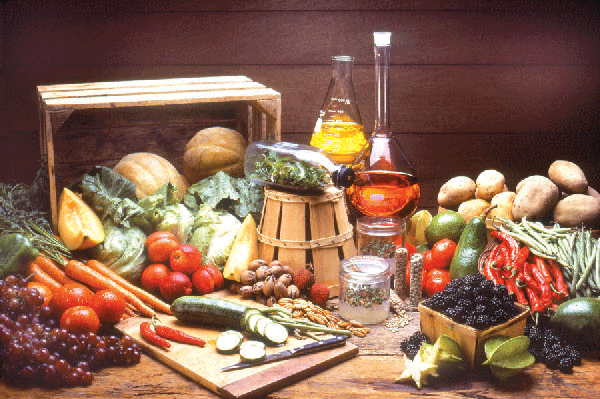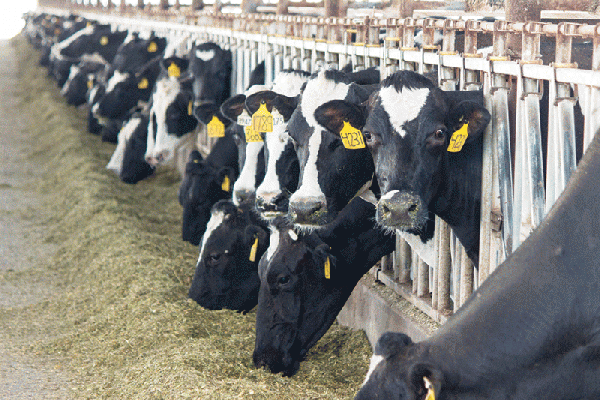
U.S. agriculture is doing a better job of telling its story to the consumer public and being more proactive, says Allyson Perry, but it’s still too often going about it in the wrong way.
“We have a great story to tell,” she says. But trying to win public opinion with information about science, economics, or best management practices “just doesn’t resonate with consumers — they don’t want to hear it.”

ALLYSON PERRY
Rather, says Perry, who is senior project manager for the Center for Food Integrity, a member-driven organization with a mission to build consumer trust and confidence in today’s food system, “It’s about developing long term relationships with your consumers, keeping in mind who your consumers are. It takes time to change perceptions, which doesn’t happen overnight. But consumer perceptions can change in our favor if we use the right communications tactics.”
Perry spoke at the joint annual meeting of the Mississippi Farm Bureau Federation’s soybean, wheat, and feed grains policy committees.
The center conducts a nationwide survey each year to determine consumer trust in, and attitudes about, the U.S. food system. The findings, she says, show that “agriculture doesn’t have an image issue — it has a trust issue. There is a lack of trust in today’s food system.”
Stay current on what’s happening in Mid-South agriculture: Subscribe to Delta Farm Press Daily.
And trust, she says, is based less on the competence of farmers and the soundness of their practices than on values shared by three key groups: moms, millennials, and foodies.
Millennials, ages 19-34, are the fastest growing segment of our population, at 37 percent, Perry says. “The way they feel about their food is going to impact their buying habits. They are the least trusting of all generations.”
Moms, those with children at home under age 18, are 30 percent of the population. “They’re making decisions about their family’s food every single day.”
Foodies, at 27 percent, are those who have a refined interest in food and alcoholic beverages. “They study food, they research food, they talk about food. It’s a growing segment of the population.”
Agriculture’s goal used to be, Perry says, “if we educate the consumer they will logically understand us and forget the unfavorable nonsense being promoted by activists — if we just educate them about agriculture, they will come around.“So, we tried it. We educated them. And when they didn’t come around, we tried to educate them some more. And they still didn’t come around. Because what they’re asking are questions based on their values, not on scientific information.
Consumers: Is it morally right?
“You can talk about the science and economics of GMOs all you want to, but that doesn’t answer their questions. What they’re really asking is, ‘Is it morally right for you to do this?’ Science and economics don’t connect with their concerns.”
Agriculture’s goal should be to better understand the moral and social concerns of consumers, Perry says. “We need to lead with a common values statement — to give them information about agriculture and food in ways they can trust, and that will reflect back on us favorably.”
Today’s instantaneous communications have had an impact on consumers, Perry says. “For so long, we operated on the traditional model — an expert who shared details about a subject, and then people made up their minds. Now, we have a tribal communications model, in which people are heavily involved in Facebook, Twitter, and other social media. They’re looking to family, friends, neighbors, and others for confirmation of their biases.

"In agriculture, we tend to be logical and scientifically oriented. We think everyone else can see our logic and our science — but they don’t," says Allyson Perry.
“Back then a sound bite on the news was nearly a minute; now it’s 7 seconds at the longest. Now everyone is a communicator. If you’ve got a smart phone, you’re a communicator: You can take photos, you can post them for the world to see; you can post your opinion, you can be an expert.
“And bad news always sways more than positive news. It takes just one bad piece of information to neutralize five pieces of positive information. So, we in agriculture are often in an uphill battle as the activist organizations and the media play up the negative aspects of GMOs, animal antibiotics, pesticides, etc.”
Agriculture and agribusiness have spent a lot of time and effort trying to convince the public that the activists are wrong, says Perry.
“But, we haven’t always communicated in the best ways possible — we cited a lot of science and a lot of economics. But the activists figured how to connect with people by using touchy-feely, your-values-align-with-mine messages. And it worked.
“We haven’t done that, because in agriculture we tend to be logical and scientifically oriented. We think everyone else can see our logic and our science — but they don’t.
“We’re never going to change the minds of the extremists, but we certainly have an opportunity to change the minds of the reasonable majority who truly want to know that we share their moral and social values.”
Looking for shared values
Touchy-feely, she says, is “something agriculture has run from for years when we’ve tried to communicate with consumers. But the activist groups have embraced touchy-feely, and they have made headway. They communicate that their values connect with the consumer’s values: ‘There is no way I would ever mistreat an animal; there is no way you would ever mistreat an animal; so you must surely align with us.’ Research shows shared values are three to five times more important than facts.”

“Agriculture’s goal should be to give consumers information about agriculture and food in ways they can trust, and that will reflect back on us favorably,†says Allyson Perry.
A loss of trust in institutions began in the 1960s, Perry says, with Vietnam, Kennedy assassinations, and other social upheavals. “As agriculture has become more removed from the general public, we have become an institution. We know we can still be trusted, and that our food is every bit as safe or safer than it was 50 years ago. But thanks to the negativity of the activists and the media, much of the public now sees us as another institution that can’t be trusted.”
An affluent society has helped to create and foster some of these issues, she says. “When you’re not worried about your next meal, you can have the luxury of opposing GMOs in your food.”
Trust involves three components, Perry says:
• Confidence (Are you smart? Are you skilled? Do you know what you’re doing?)
• Competence (Do you value the same things I value? If you do, I’m going to trust you and give you freedom to operate, without heavy oversight, regulation, litigation, legislation. “In an earlier time, when consumers trusted farming, you were able to operate without any of these constraints, and you did it well. Now, you no longer have that social license.”)
• Influential others (those you trust, whose opinion you trust).
Because of the controversy over GMOs, pesticides, and other issues, Perry says, today’s farming practices aren’t trusted by many consumers. On a scale of 1 to 10, with 10 being the best, she says their survey shows consumer trust in today’s food system at 5.84.
“They trust family farms, but believe commercial farms put their interests above those of consumers. Big is bad, they believe, but they don’t know what big is, can’t define it. They think if you got big, you surely must have done it through unethical activity — therefore, you don’t share my values and you aren’t someone I trust. But consumers believe small farms have similar values to theirs."
The Center for Food Integrity survey showed “keeping healthy food affordable” ranked No. 1 with millennials and foodies and No. 2 with moms.
Other key concerns with all groups were the rising cost of food, rising healthcare costs, and the U.S. economy.
About the Author(s)
You May Also Like




